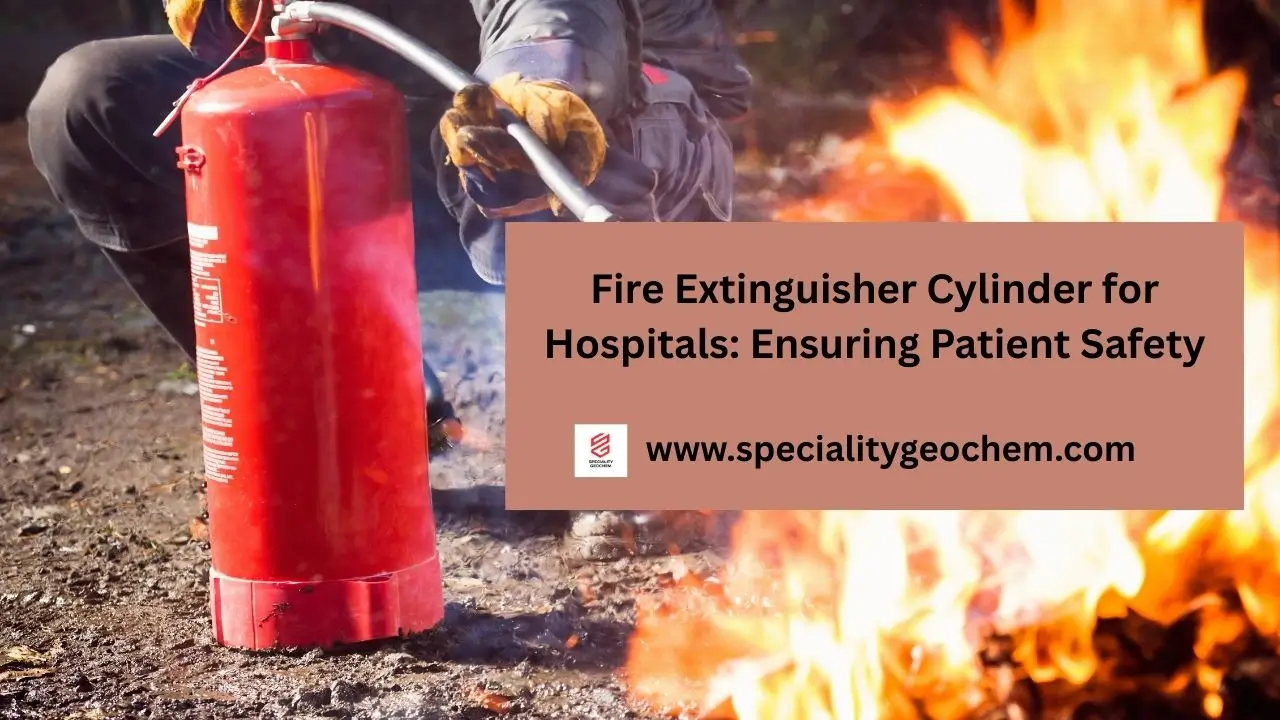Hospitals are sanctuaries of healing, where patients, doctors, nurses, and staff rely on a safe environment to deliver and receive care. However, like any large facility that combines electrical systems, laboratories, oxygen supply lines, and kitchens, hospitals face significant fire risks. In such sensitive spaces, prevention and preparedness are non-negotiable. Among all safety measures, the Fire Extinguisher Cylinder for Hospitals stands out as one of the most critical tools to ensure patient safety and maintain uninterrupted medical operations.
This article explores why fire extinguisher cylinders are essential in healthcare facilities, their types, placement strategies, compliance requirements, and best practices for effective hospital fire safety management.
Why Hospitals Need Specialized Fire Safety
Unlike ordinary commercial buildings, hospitals house vulnerable populations—patients who may not be able to evacuate quickly, elderly individuals, and people dependent on life-support equipment. A minor fire incident can become catastrophic if safety equipment is inadequate.
Some key fire hazards in hospitals include:
- Oxygen-rich environments – Oxygen cylinders and centralized pipelines can accelerate fire spread.
- Laboratories and pharmacies – Storage of flammable chemicals poses risks.
- Electrical equipment – MRI scanners, ventilators, and diagnostic machines create high electrical loads.
- Hospital kitchens – Cooking oils and LPG cylinders can trigger Class F fires.
Given these risks, installing reliable fire extinguisher cylinders in hospitals is not just a legal obligation but a moral responsibility to safeguard lives.
What is a Fire Extinguisher Cylinder for Hospitals?
A fire extinguisher cylinder for hospitals is a pressurized container filled with fire-suppressing agents such as dry chemical powder, carbon dioxide (CO₂), or clean agents. These cylinders are specifically chosen and placed in hospital environments to combat different types of fire hazards. Unlike generic extinguishers, hospital-grade cylinders are selected considering:
- Compatibility with oxygen-rich areas
- Minimal disruption to medical equipment
- Safe for use around patients and sensitive electronics
They serve as the first line of defense, buying time for staff to respond and preventing minor sparks from escalating into hospital-wide emergencies.
Types of Fire Extinguisher Cylinders Used in Hospitals
Every hospital requires a combination of extinguisher types because fire hazards vary from one department to another. Commonly used cylinders include:
- Water and Foam Extinguishers
- Effective for Class A fires involving wood, paper, and cloth.
- Often placed in administrative offices, waiting areas, and wards.
- Carbon Dioxide (CO₂) Extinguishers
- Ideal for Class B (flammable liquids) and Class C (electrical) fires.
- Safe for hospital ICUs, diagnostic rooms, and operating theaters where electronic equipment is present.
- Dry Chemical Powder Extinguishers
- Multi-purpose, tackling Class A, B, and C fires.
- Useful in laboratories, storage areas, and parking lots.
- Clean Agent (Halotron) Extinguishers
- Non-toxic, residue-free extinguishing agents.
- Best suited for sensitive environments like ICUs, neonatal wards, and server rooms.
- Wet Chemical Extinguishers
- Specifically designed for Class F fires (kitchen oils and fats).
- Essential in hospital kitchens and cafeterias.
Selecting the right fire extinguisher cylinder for hospitals depends on departmental fire risk analysis.
Placement of Fire Extinguisher Cylinders in Hospitals
Strategic placement ensures accessibility during emergencies. Some best practices include:
- ICUs and operating theaters – Install clean agent or CO₂ cylinders that protect medical equipment without leaving harmful residue.
- Laboratories and pharmacies – Dry chemical powder or CO₂ cylinders should be within easy reach.
- Kitchens – Wet chemical extinguishers must be placed near cooking stations.
- Patient wards and corridors – Water or foam extinguishers can be installed in common areas.
- Server rooms – Clean agent cylinders should protect IT infrastructure.
Every extinguisher must be mounted at an accessible height, with signage and instructions clearly displayed.
Compliance and Certification
Hospitals must adhere to national and international fire safety standards. In India, compliance with National Building Code (NBC), ISI standards, and local fire authority regulations is mandatory. Globally, NFPA (National Fire Protection Association) and UL-certified cylinders are widely accepted.
Choosing certified cylinders ensures:
- Guaranteed performance during emergencies.
- Compliance with hospital accreditation standards (NABH, JCI).
- Reduced liability and insurance complications.
Training and Preparedness
Even the best fire extinguisher cylinders in hospitals are ineffective without trained personnel. Hospital staff should undergo regular fire safety drills, covering:
- Identifying the type of fire.
- Selecting the correct extinguisher.
- Using the PASS technique (Pull, Aim, Squeeze, Sweep).
- Evacuating patients safely.
Nurses, security staff, and ward boys should all be trained in emergency response to ensure no time is wasted.
Maintenance of Fire Extinguisher Cylinders
Routine maintenance is critical. Hospitals should implement a monthly inspection and annual servicing schedule:
- Check cylinder pressure gauges.
- Ensure no tampering or leakage.
- Verify accessibility (not blocked by equipment or furniture).
- Replace expired extinguishers.
A well-maintained fire extinguisher cylinder for hospitals provides confidence that life-saving equipment will work in critical moments.
Role in Patient Safety and Hospital Reputation
Investing in the right fire safety systems protects more than physical assets—it builds trust and confidence. Patients and their families choose hospitals that prioritize safety. Accreditation boards and insurance companies also evaluate compliance with fire safety norms.
By integrating high-quality fire extinguisher cylinders in hospitals, management demonstrates its commitment to patient well-being, staff protection, and community trust.
Future of Hospital Fire Safety
The future is moving towards automatic fire suppression systems integrated with cylinders. Smart cylinders with IoT sensors can alert staff when activated or when maintenance is due. Environment-friendly extinguishing agents are replacing older chemicals to ensure patient safety without environmental harm.
For hospitals aiming to achieve global safety benchmarks, investing in such innovations is the next step.
Conclusion
Hospitals are unique environments where fire safety demands extra vigilance. Installing and maintaining the right fire extinguisher cylinder for hospitals can mean the difference between a controlled incident and a catastrophic disaster. From selecting the correct type of cylinder for each department to ensuring compliance, training, and maintenance, every step contributes to a safer healthcare facility.
At Speciality Geochem, we understand the importance of fire safety in healthcare. As a trusted Fire Extinguisher Cylinder manufacturer in India, we deliver certified, reliable, and advanced fire safety solutions tailored for hospitals and healthcare institutions. With the right equipment in place, hospitals can ensure patient safety, protect their reputation, and maintain their mission of healing without compromise.

